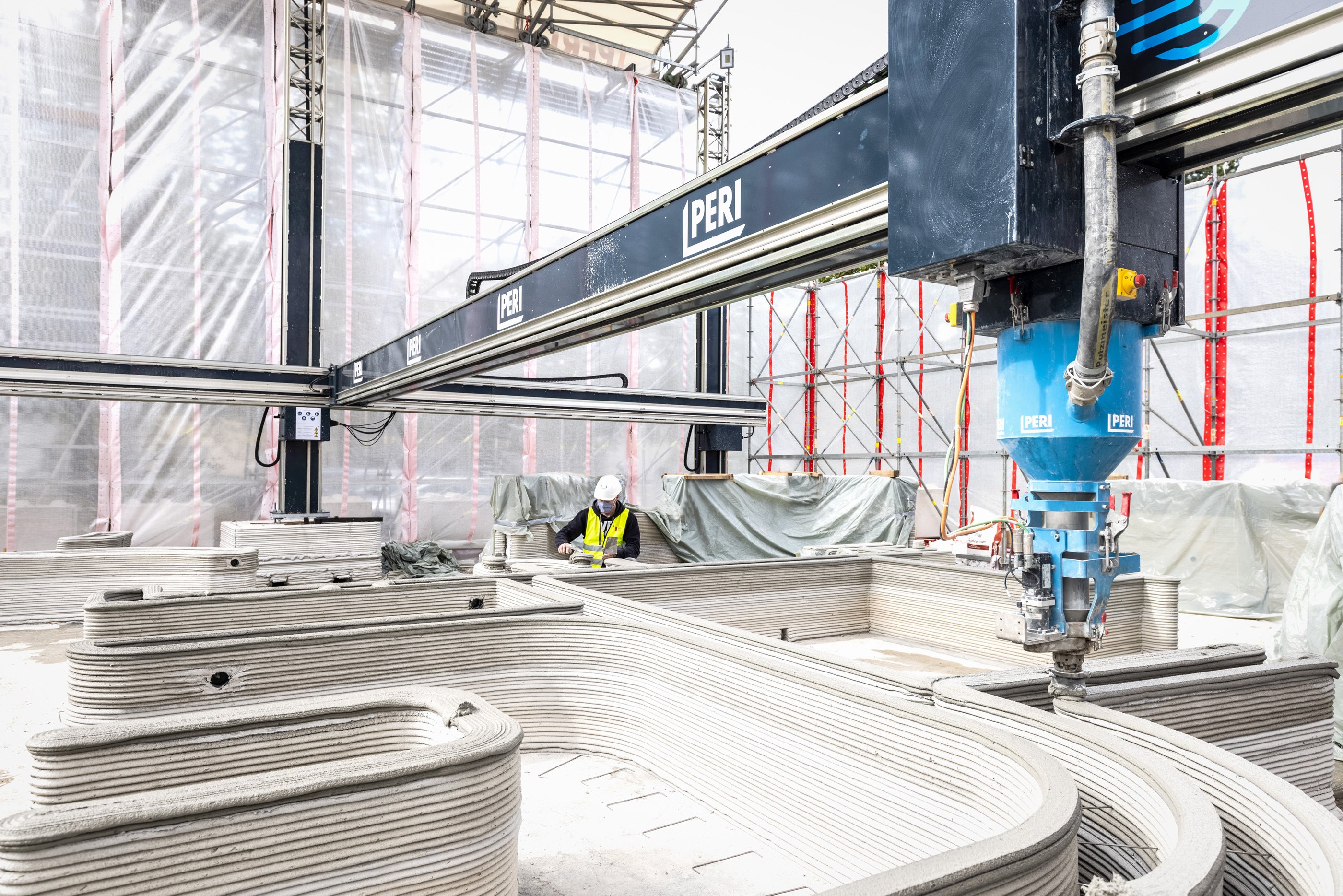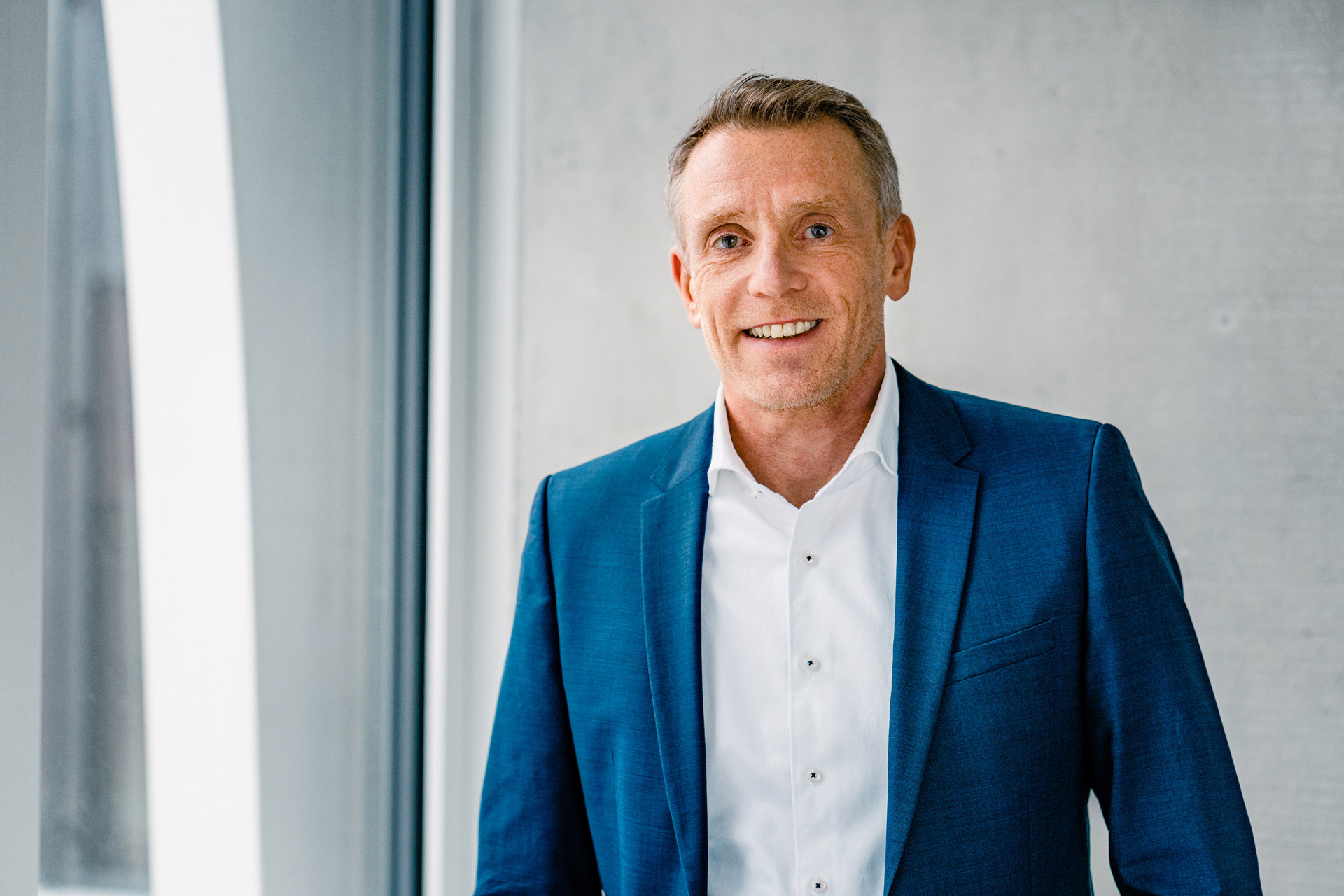HeidelbergCement supplies material for Germany’s first 3D printed residential building
3D concrete printing material for residential construction ready for the market
HeidelbergCement supplies the material for Germany’s first printed residential building made of concrete. The high-tech material “i.tech 3D” was developed by the HeidelbergCement subsidiary Italcementi specifically for 3D printing and is suitable for versatile use with various types of 3D printers.
It is undoubtedly a milestone: for the first time in Germany, a residential building has come out of a printer. The two-storey detached house in Beckum, North Rhine-Westphalia with approx. 80 m2 living space per floor consists of three-shelled walls filled with insulating compound. The premiere house is produced by a 3D concrete printer installed on site. The printing results of HeidelbergCement’s material are convincing and the ground floor is almost standing.
“The development of a cement-bound material for 3D printing is a major challenge. It should be easy to pump and extrude,” says Dr. Jennifer Scheydt, Head of the Engineering & Innovation department at HeidelbergCement Germany. “It must also quickly develop sufficient load-bearing capacity so that the lower layers do not give out under the load of the upper layers. At the same time, the bond between the layers must be ensured,” says Scheydt.
The house in Beckum is printed by PERI, one of the leading manufacturers of formwork and scaffolding systems for the construction industry. “The construction of the 3D-printed residential building in Beckum is a milestone for 3D construction printing technology”, says Thomas Imbacher, Innovation & Marketing Director at PERI GmbH. “We are very confident that construction printing will become increasingly important in certain market segments over the coming years and has considerable potential. Other residential printing projects are now being drawn up in Germany. We are proud that PERI’s involvement in the project in Beckum has seen us become a pioneer and forerunner for this new construction technique.” The engineering office Schießl Gehlen Sodeikat supported the development of the concept for obtaining the approval, the planning and execution of the corresponding approval tests was carried out by the Technical University of Munich.
The portal printer was developed by COBOD. PERI holds a stake in this Danish manufacturer since 2018The print head moves on a fixed metal frame in all three spatial axes. This enables the printer to move to any position within the construction. During the printing process, the printer also takes into account the pipes and fittings to be laid later, for example for water or electricity.
This completely new construction technique performed for the first time in Germany has smoothly passed all official approval processes in recent weeks and months. The approval granted by the North Rhine-Westphalian building authorities on a case-by-case basis for the project has been obtained by HeidelbergCement together with PERI.
“As a high-performance and innovative partner, HeidelbergCement has contributed to the fact that all open questions regarding the construction method and the printing material were able to be clarified quickly and without problems,” says Fabian Meyer-Brötz, Head of 3D Construction Printing at PERI.
Thanks to the extensive knowledge about cement and concrete and the innovative research at HeidelbergCement and its subsidiary Italcementi, the firm will in future provide high-quality products and technical know-how to architects, builders and companies that want to produce houses or concrete products with 3D printers. “We have adapted the traditional building material concrete to the possibilities offered by digitalisation,” says Enrico Borgarello, Director of Global Product Innovation at HeidelbergCement, who is responsible for the development of “i.tech 3D”.
The innovative material for 3D printing thus not only allows new freedom in design, but also more variety since each component can be individually designed. Last but not least – as impressively demonstrated in Beckum – it enables the construction process to be significantly accelerated. Thus “i.tech 3D” can provide a boost to innovation for very different players of the construction industry.
Object description
Project partners: PERI GmbH; HeidelbergCement AG; Italcementi - a subsidiary of HeidelbergCement
Client: Hous3Druck GmbH
Building planning: MENSE-KORTE ingenieure+architekten
Start of printing: 17.09.2020
More Information
www.heidelbergcement.de/de/i.tech3D
Captions
Photo 1
The HeidelbergCement research team is developing material formulations that can be used in various 3D printing techniques.
Image source: GPI HC Group
Photo 2
The high-tech material "i.tech 3D" was developed by HeidelbergCement subsidiary Italcementi specifically for 3D printing and is suitable for versatile use with various types of 3D printers. The house in Beckum is printed by PERI with a BOD2 type 3D concrete printer.
Copyright: PERI GmbH
Photo 3
Big challenge. The material for 3D printing had to be easily pumpable and easy to extrude. It must also quickly build up sufficient load-bearing capacity so that the lower layers do not fail under the load of the upper layers. At the same time, it must also ensure the bond between the layers.
Copyright: HeidelbergCement AG
About HeidelbergCement
HeidelbergCement is one of the world’s largest integrated manufacturers of building materials, with leading market positions in aggregates, cement, and ready-mixed concrete. The company employs some 54,000 people at more than 3,000 locations in over 50 countries.


